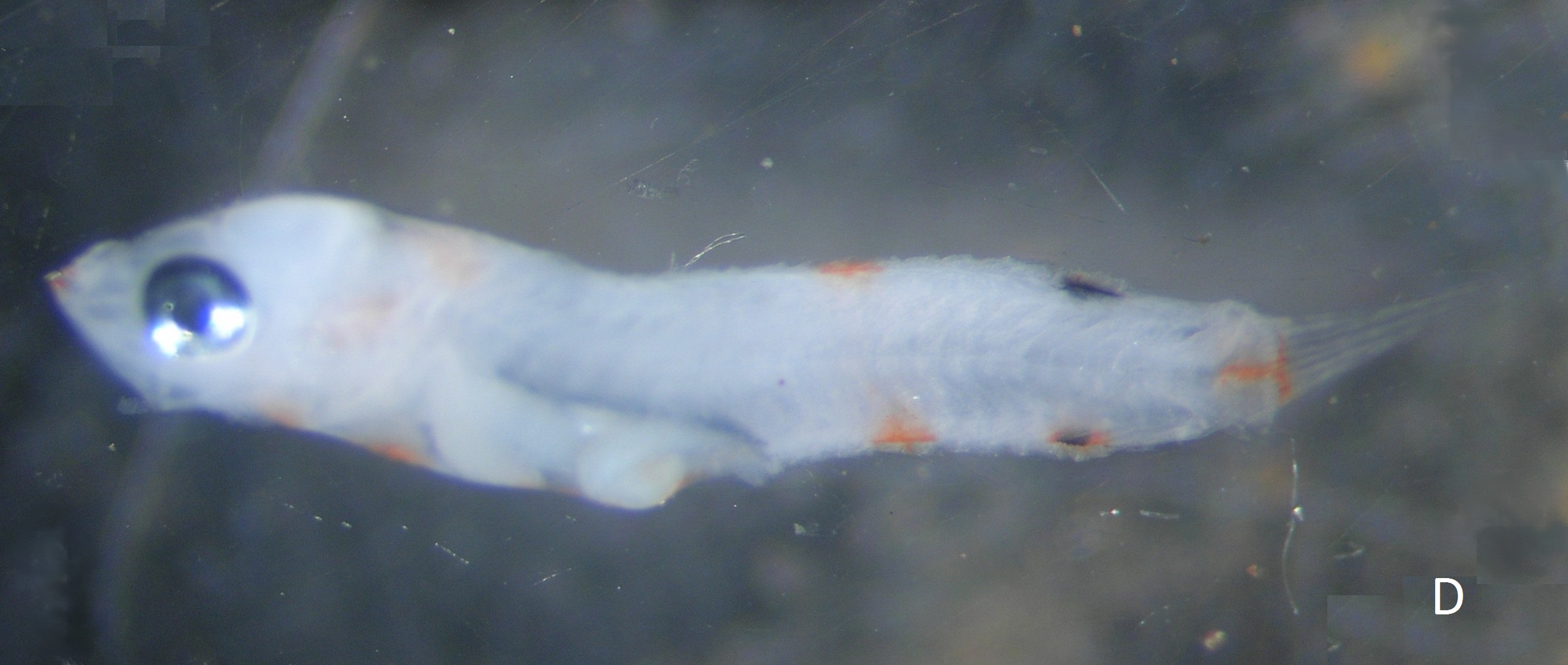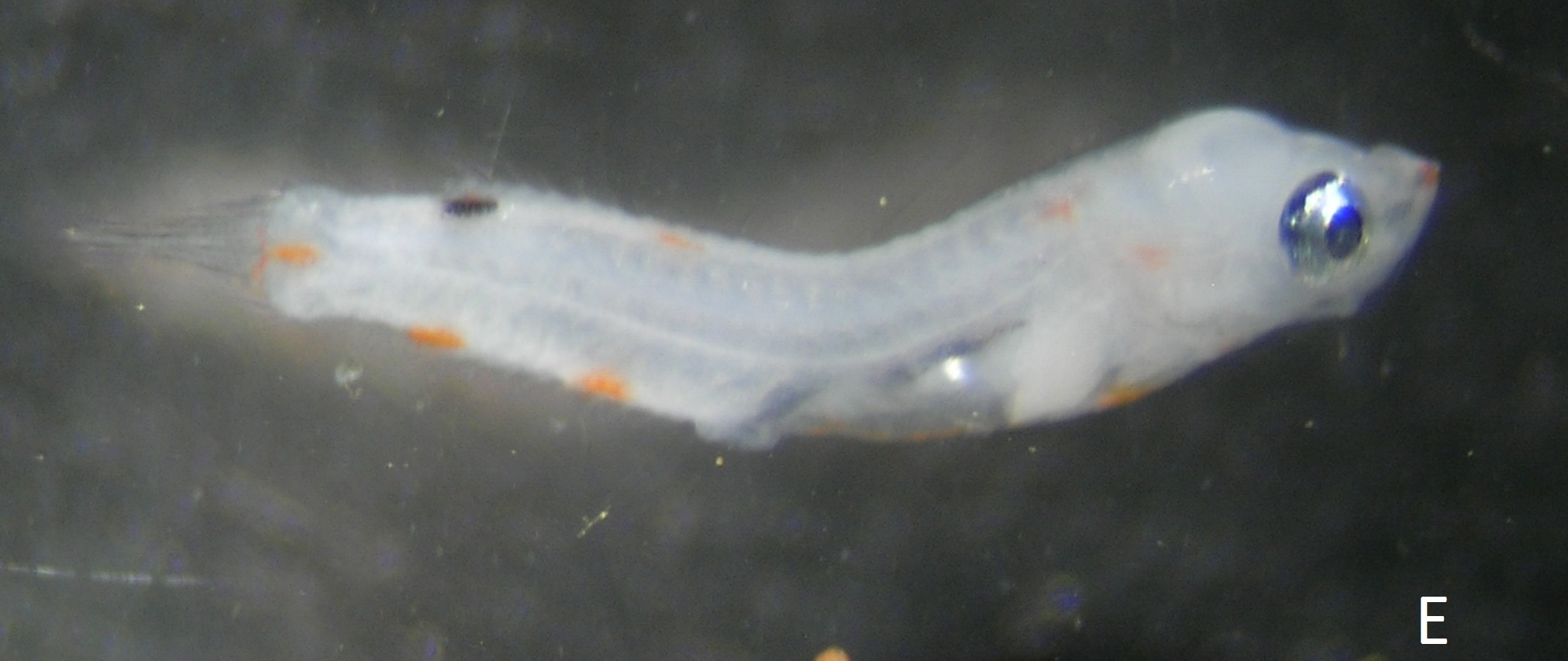Labridae: K III B8
Halichoeres lapillus Smith 1947, Stethojulis interrupta (Bleeker, 1851) & Coris caudimacula (Quoy & Gaimard, 1834) among others
Jewelled wrasse, cutribbon wrasse, spottail coris








|
Egg diameter in µm |
Number of oil globules |
Diameter of oil globule in µm |
Yolk texture |
Perivitelline space |
Position of oil globule at hatch |
Gut length at eye- pigment stage |
Myomeres |
|
550-670 |
1 |
120 |
clear |
narrow |
bow |
58% of NL |
25-26 |
Egg: The small size and oil globule position in the bow, makes these eggs distinctive, but at the same time indistinguishable from Type 1 larvae of KIIIB7. The embryo has black pigment running down its length, and similar spots cloud the oil globule (A). The eggs in A1 were from a tank spawning of Halichoeres iridis. Being small eggs, they often hatch while the sample is being processed in the evening, especially in summer. Incubation is 22-26 hours, assuming evening spawning.
Larva: The 2 day larva has 5 black pigment blotches, the first on the snout, as illustrated in B, but also distinguishable in B1. Both dorsal and ventral finfolds, at this stage, have a serrated edge (B1, but better seen in B2). B, B1 & B2: 2 days, C: 3-4 days (23°C).
The spiny or serrated finfold edge, is a feature of some early wrasse larvae. Ikeda and Mito (1988), illustrated it on Labroides dimidiatus, Stethojulis interrupta and Halicoeres tenuispinis, and Jones et al (2006), for Thalassoma bifasciatum.
Thirtytwo larvae have been sequenced, 6 matching 3 adult Halichoeres lapillus, 1 matching 5 adult Coris caudimacula; and 6 matching 4 adult Stethojulis interrupta, all adult material collected locally (BOLD). One found a match with adult Bodianus bilunulatus, and a cluster of 9 larvae, all from the same sample taken on 21 May 2010, have found no match. Three match the sequence of the parrotfish, Calotomus carolinus, but notes indicate subtle differences. Clearly these small eggs require careful attention to separate them.
An interesting record is a larval wrasse (D above), found in my plankton net in October 2010, the barcode of which is about 3.7% different from Suezichthys ornatus from Tristan da Cunha (Ben Victor pers. comm.). Another with an almost identical pigment pattern (E), and only about 2.7% different in barcode from D, was collected in December 2006. Seven larvae hatched from eggs collected in 2010 and 2011 have matched larva D. In 1914, Gilchrist & Thonpson described a wrasse from Natal, as Platyglossus robinsoni, presently in the genus Suezichthys. Due to no further specimens, the record has recently been regarded as dubious.The present barcode data set, however, suggests there are possibly two species of Suezichthys off Park Rynie, one of which might confirm the validity of Suezichthys robinsoni.



| Linked samples | Offshore | Inshore |
| Eggs | 5078 | 6791 |
| Hits | 315 | 441 |
This was the 13th most common egg off Park Rynie (Table 2: Introductory Notes). The lack of a clear spawning season (blue graph), may, however, be due to the presence of at least two species. The egg was also common in the DHM samples, with a similar scatter over the year (green graph). Presence off Park Rynie over the past 25 years, has shown a steady increase until 2000, whereafter numbers held steady(white graph). The Park Rynie linked samples had more eggs inshore (57%), indicating a species that mostly spawns shoreward of the 30m contour. See Section 7.3 and Table 1 of the Introductory Notes, for more information on the linked samples.